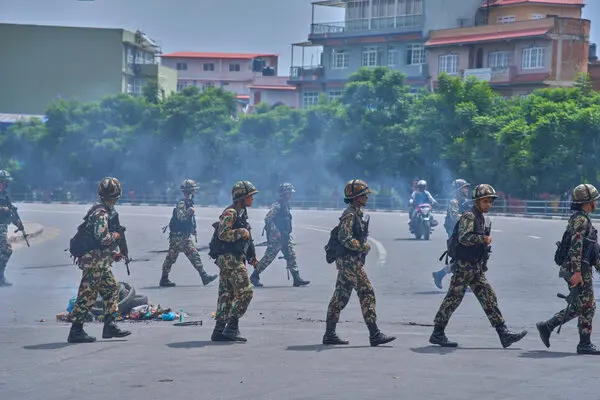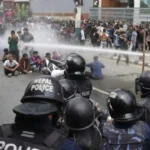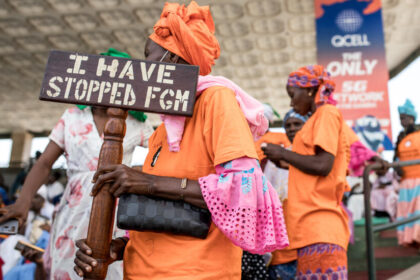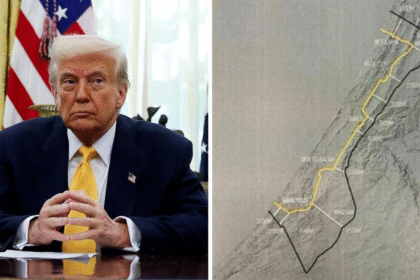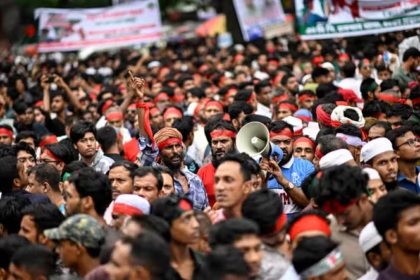Nepal Protests LIVE: Army Deploys 5,000 Troops in Kathmandu as Violent Clashes Rock Streets, 12 Districts on High Alert
Nepal Protests LIVE: Army deploys 5,000 troops in Kathmandu after violent clashes erupt. 12 districts placed on high alert as authorities race to restore order and prevent further chaos
Over the past two days, protests in Nepal escalated quickly into violence and the storming of government buildings. The Nepal Army announced that it was taking charge of security operations in the country from Tuesday (September 9, 2025) night.
The Indian government issued an advisory to Indians in Nepal, urging them to stay indoors and not move around. Several Indian airlines have also stopped flights to and from Kathmandu.
The student-led “Gen Z” protests in Nepal, which began in response to a government ban on social media, expanded into a larger campaign reflecting growing public criticism of the K.P. Sharma Oli dispensation and the country’s political elite over allegations of corruption and apathy towards the common people.
Prime Minister Oli resigned in the face of massive protests for a second day, even as the ban on social media was lifted late on Monday night. The demonstrators stormed many government buildings and set the parliament as well as homes of several high-profile leaders ablaze, a day after 19 people died in violence.
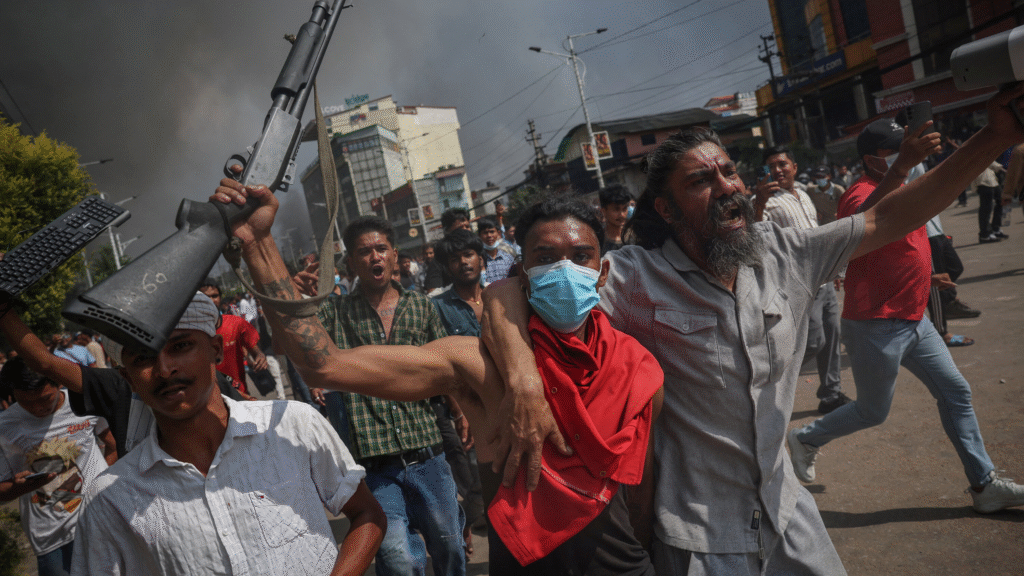
Kathmandu, September 10, 2025 — Nepal witnessed one of its most turbulent days in recent years as the capital city, Kathmandu, descended into chaos following large-scale anti-government demonstrations. The Nepali Army has now been deployed, with over 5,000 troops patrolling key areas of the capital and other flashpoints across the country. Officials confirmed that at least 12 districts have been placed on high alert as clashes between protesters and security forces intensified.
The protests, which began as peaceful demonstrations earlier this week, escalated sharply after reports of police using excessive force to disperse crowds near Ratna Park and Durbar Marg. Demonstrators, many of them young citizens and student groups, accused the government of corruption, mismanagement, and failing to address rising inflation and unemployment.
Chanting slogans such as “Down with injustice” and “Save Nepal’s future”, protesters demanded the resignation of senior ministers, fresh parliamentary elections, and urgent reforms to revive the struggling economy.
Late Tuesday night, the Ministry of Home Affairs issued a directive authorizing the deployment of the Nepali Army to restore calm after police forces appeared overwhelmed by the scale of unrest. Armored vehicles, trucks loaded with soldiers, and aerial surveillance units were seen across Kathmandu Valley by dawn.
Colonel Rajendra Shrestha, spokesperson for the Nepali Army, said:
“Our priority is to ensure the safety of citizens and prevent further violence. Troops are patrolling sensitive areas, including government offices, transportation hubs, and heritage sites.”
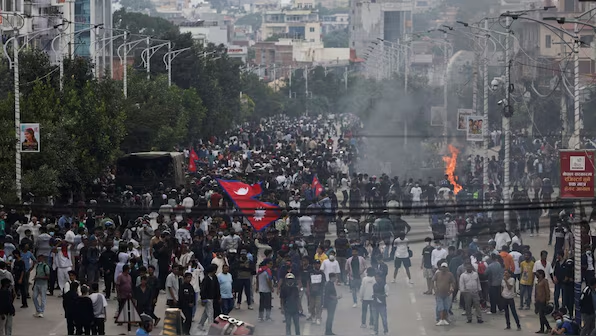
This marks the largest military mobilization in Kathmandu since 2006, when protests forced the end of King Gyanendra’s direct rule.
While Kathmandu remained the epicenter of the unrest, reports confirmed that clashes also erupted in Lalitpur, Bhaktapur, Pokhara, Biratnagar, and Chitwan. Stone-pelting, arson, and vandalism were reported in at least 12 districts, prompting authorities to impose curfews in 7 areas and restrict internet access in parts of the capital.
Hospitals in Kathmandu confirmed treating over 120 injured, including both protesters and security personnel. At least 5 casualties have been reported, though officials have not released full details.
For many citizens, the unrest is a reflection of deep-rooted frustration.
Sushmita Thapa, a university student who joined the protests in New Road, told reporters:
“We have no jobs, prices are rising every day, and our leaders only care about power. This protest is not just about politics—it’s about survival.”
Local shopkeepers, however, expressed fear that prolonged unrest would damage businesses already reeling from the impact of inflation and the slowdown in tourism. Kathmandu’s Durbar Square and Thamel, usually bustling with foreign visitors, were deserted on Wednesday morning.
Prime Minister Pushpa Kamal Dahal, also known as Prachanda, addressed the nation late Tuesday, urging calm and dialogue.
“The government is open to discussions with all stakeholders. Violence will only weaken Nepal’s democratic progress,” he said, appealing to protesters to return home.
However, opposition parties seized the moment to intensify pressure. The Nepali Congress and other opposition blocs accused the government of authoritarian behavior and failing to manage the economy. Former Prime Minister Sher Bahadur Deuba called for an emergency parliamentary session, warning that “Nepal is heading toward a governance crisis.”
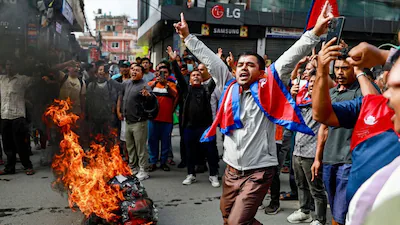
Nepal’s immediate neighbors, India and China, are closely monitoring the situation. The Indian Embassy in Kathmandu issued a travel advisory for its citizens, cautioning them against unnecessary movement in protest-hit areas. China, which has growing investments in Nepal under the Belt and Road Initiative, expressed concern about the unrest and urged stability.
The United Nations Office in Nepal released a statement urging both the government and demonstrators to exercise restraint. “The right to peaceful assembly must be respected, but security forces must also act proportionally in handling demonstrations,” it said.
Analysts warn that prolonged unrest could further weaken Nepal’s fragile economy. Tourism, one of the country’s main sources of revenue, is already struggling to recover from the pandemic downturn. Travel agencies reported cancellations from several international groups who had planned trekking expeditions in the Himalayas.
The Nepal Stock Exchange (NEPSE) saw a sharp decline of 3.5% on Wednesday morning, reflecting investor uncertainty. Fuel supplies and transportation networks were also disrupted, with several highways blocked by protest groups.
Observers have drawn parallels between the current unrest and the 2006 People’s Movement (Jana Andolan II), which forced the monarchy to relinquish power and paved the way for Nepal’s democratic republic. However, analysts caution that today’s protests are driven more by economic despair than political ideology.
Political analyst Dr. Bishnu Rimal said:
“Nepal’s democracy is not under immediate threat, but public anger over corruption and poor governance has reached a boiling point. Unless urgent reforms are made, this unrest could reshape the country’s political landscape.”
Authorities remain on high alert as protests show no signs of abating. Schools and colleges in Kathmandu have been ordered closed for the remainder of the week. Internet services, particularly mobile data, remain restricted in several hotspots.
Diplomatic sources confirmed that informal backchannel talks are underway between government representatives and student leaders to find a path toward de-escalation. However, protesters have vowed to continue demonstrations until their demands are met.
5,000+ Nepali Army troops deployed in Kathmandu.
12 districts placed on high alert.
120+ injured and at least 5 deaths reported.
7 curfews imposed in major cities.
Prime Minister Dahal calls for dialogue, opposition demands accountability.
International community urges restraint and calm.


